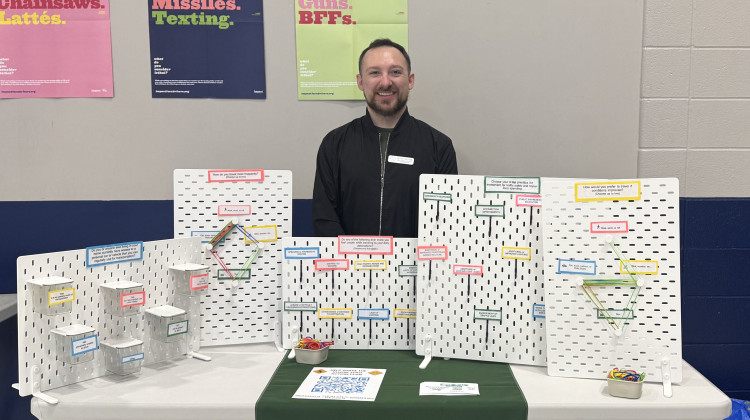
Baily's Beads as seen during the 2017 total eclipse. The new app named "Sunsketcher" records this moment in totality, using only a small part of the cell phone camera sensor.
Aubrey Gemignani / NASAThe WKU-designed app is called “Sunsketcher.” It works during the upcoming solar eclipse and only in the path of totality.
This is the path in which viewers will see most of the sun covered by the moon. According to NASA, this is a narrow band extending from Maine to southern Texas in North America.
Much of Indiana and parts of western Kentucky are among the best spots in which to watch the April 8th event.
WKU Physics and Astronomy Professor Gordon Emslie said the free app is easy for anyone to use and will help study the sun specifically during the eclipse.
“It will basically be used to measure things called ‘bailey beads’ during the eclipse, and therefore determine the size and shape of the sun,” Emslie said. “It's been designed by a small army of students in disciplines ranging from computer science, to engineering to art and design. It's been a wonderful team effort.”
“Bailey beads” are bright dots created as the sun’s rays pass the surface of the moon — specifically the valleys between lunar mountains.
While the general shape of the sun is known, this body of research is designed to help make it exact.
Right before totality, the phone simply sits on a flat surface pointed at the sun. The app automatically takes multiple images of the sun as it enters totality, recording the brightest area of the image, and those all-important bailey beads. The app can measure the user's exact GPS location and angle of the phone camera.
Emslie said the images it records are not dramatic — just a bunch of bright dots really, but it’s the information NASA needs. He said this project is unique.
“I don't know of any other project where a million people can contribute meaningful data to a science project,” he said. “And they can do it with the equipment they have in their pocket.”
Emslie said every single user will generate valuable data because of the variety of smart phone placements, and the variance of the photos taken in time.
“So everyone gets to contribute. And the more the better,” he said. “I think it's just really neat that a million people could legitimately be able to tell you with a straight face that they contribute unique data to a NASA science project.”
The android version of the app is currently in a two-week testing phase, and the OS for Apple app is being submitted currently.
It will be available soon for both devices. The app and details of the project can be found at the project website.
Copyright 2024 WNIN. To see more, visit WNIN.
 DONATE
DONATE






 Support WFYI. We can't do it without you.
Support WFYI. We can't do it without you.